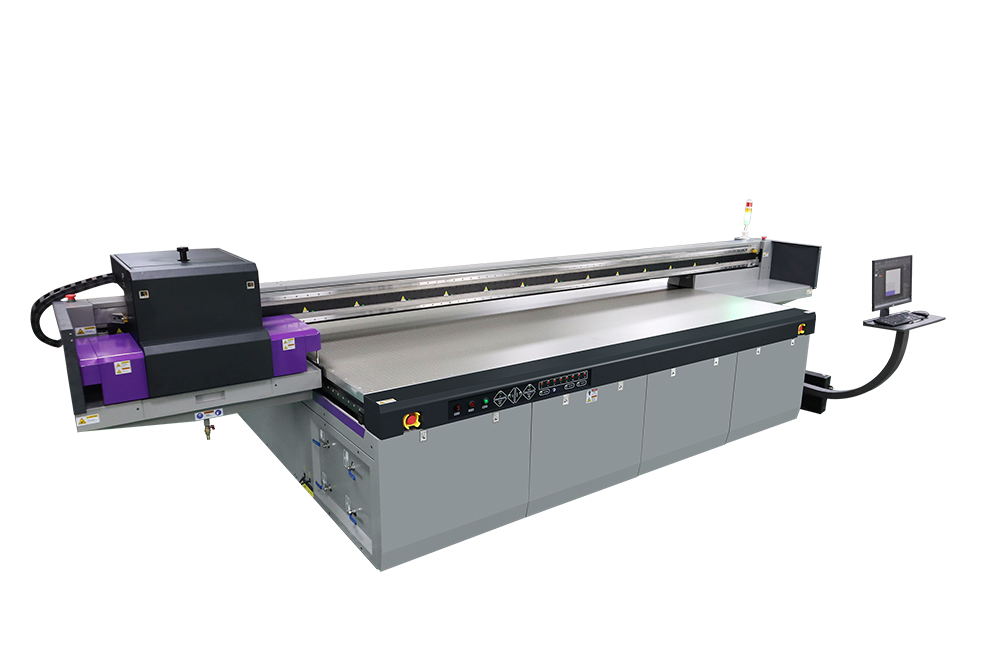UV Flatbed Printer: Setting Up and Operating Guide
UV Flatbed Printer: Setting Up and Operating Guide
UV flatbed printers have revolutionized the way we approach digital printing, offering unparalleled versatility and precision in reproducing images and designs onto a wide range of materials. From rigid substrates like glass, metal, and plastics to flexible ones such as leather and fabric, these printers deliver exceptional print quality with vibrant colors and sharp details. This comprehensive guide will walk you through the process of setting up and operating a UV flatbed printer, ensuring you harness its full potential for your printing needs.

Understanding UV Flatbed Printers
UV flatbed printers utilize UV-curable inks that are instantly dried by UV light after being deposited onto the material. This technology allows for immediate curing, resulting in prints that are durable, scratch-resistant, and water-resistant. The flatbed design accommodates materials of various thicknesses and sizes, making it ideal for both small-scale and large-format printing projects.
Key Components of a UV Flatbed Printer
Print Bed: The flat surface where the material is placed for printing. It is designed to be adjustable to accommodate different material thicknesses.
Ink System: Consists of UV-curable inks in various colors, which are stored in cartridges or tanks and supplied to the print head.
Print Head: The component responsible for depositing ink onto the material. It moves across the print bed in a controlled manner to create the desired image.
UV Lamps: Located above or beside the print bed, these lamps emit UV light to cure the ink immediately after it is deposited.
Control Software: User interface that allows for design creation, image manipulation, and printer settings adjustments.
Setting Up Your UV Flatbed Printer
Environmental Considerations:
Ensure the printer is placed in a well-ventilated area to dissipate heat generated during operation.
Maintain a stable temperature and humidity level in the room to prevent ink curing issues or material warping.
Installation and Calibration:
Follow the manufacturer’s instructions for initial setup, including installing ink cartridges, connecting power and data cables, and loading the print bed.
Perform calibration routines to ensure accurate color reproduction and print alignment.
Ink and Material Preparation:
Shake ink cartridges before installation to ensure proper ink flow.
Prepare your materials by cleaning them thoroughly to remove any dust, oil, or contaminants that could affect print quality.
Operating Your UV Flatbed Printer
Design Creation and Preparation:
Use the printer’s control software or a compatible graphic design program to create or import your design.
Adjust the design size and orientation to match the dimensions of your material.
Preview the design to ensure it aligns correctly with the print bed and material placement.
Printer Settings:
Select the appropriate print mode based on the material type and desired print quality.
Adjust ink density, curing speed, and print speed settings as needed.
Enable any special features such as white ink underprinting or varnish overlay if required.
Loading the Material:
Securely place the material on the print bed, ensuring it is flat and aligned with the print area.
Adjust the print bed height if necessary to accommodate the material thickness.
Starting the Print Job:
Initiate the print job from the control software.
Monitor the print process to ensure smooth operation and intervene if any issues arise.
Post-Print Handling:
Allow the printed material to cool before handling to avoid any heat-related damage.
Inspect the print for quality and cure the ink fully if additional curing is required.
Maintenance and Troubleshooting
Routine Maintenance:
Clean the print bed and print head regularly to prevent ink buildup and ensure consistent print quality.
Replace ink cartridges when they are depleted to avoid color inconsistencies.
Perform regular calibration checks to maintain print accuracy.
Common Issues and Solutions:
Ink Curing Problems: Ensure UV lamps are functioning properly and adjust curing settings if necessary.
Print Quality Issues: Check for clogged nozzles, dirty print heads, or incorrect ink density settings.
Software Errors: Restart the printer and control software, or consult the manufacturer’s technical support if issues persist.
Safety Considerations
Wear appropriate personal protective equipment (PPE) such as gloves and safety glasses when handling materials or performing maintenance tasks.
Keep the printer area clean and organized to prevent accidents.
Follow the manufacturer’s guidelines for safe operation and ink handling.
Conclusion
Mastering the setup and operation of a UV flatbed printer is crucial for achieving high-quality prints on a wide range of materials. By understanding the printer’s components, following proper setup procedures, and adhering to best practices for design preparation, printing, and maintenance, you can unlock the full potential of this versatile technology. With patience and practice, you’ll be able to produce professional-grade prints that meet even the most demanding standards. Remember, safety should always be a top priority when operating any printing equipment. By taking the necessary precautions and staying vigilant, you can ensure a smooth and productive printing experience.
